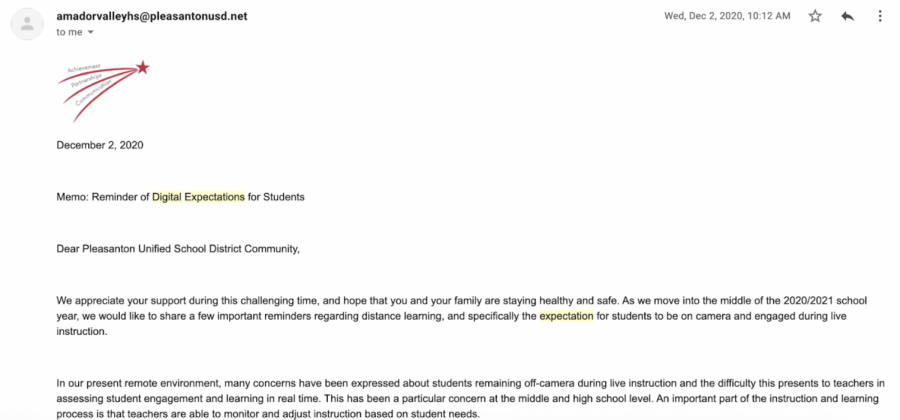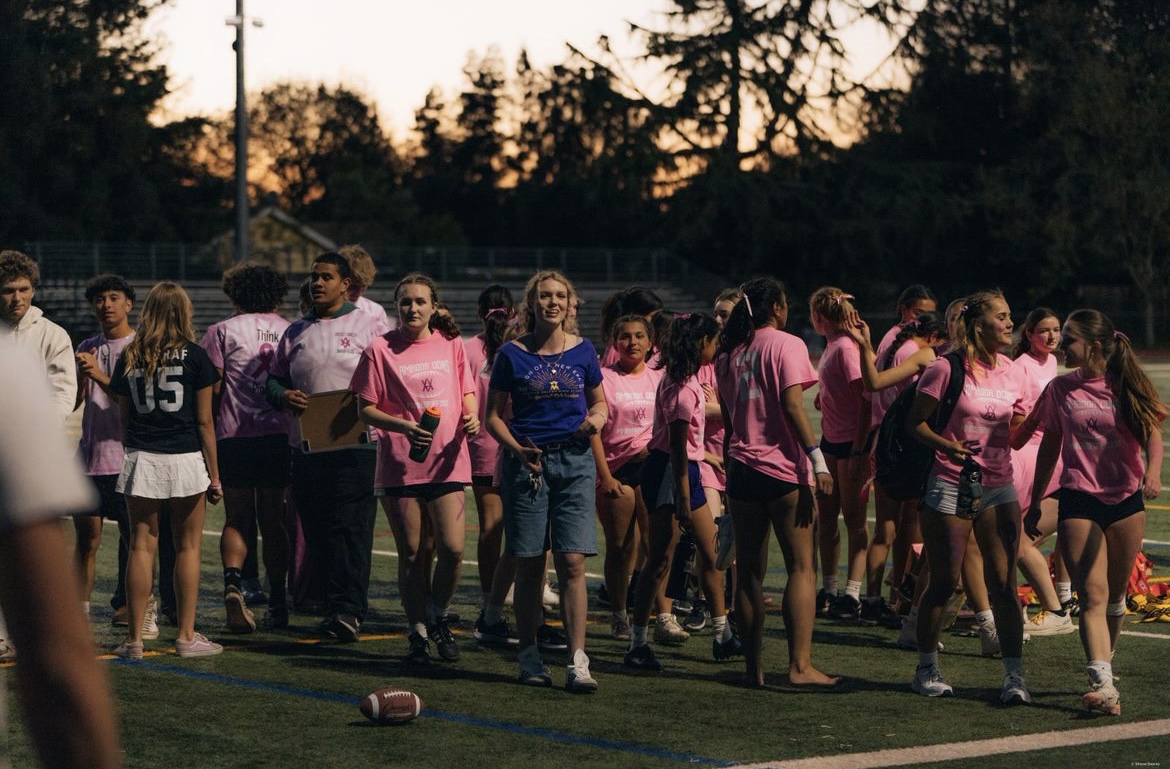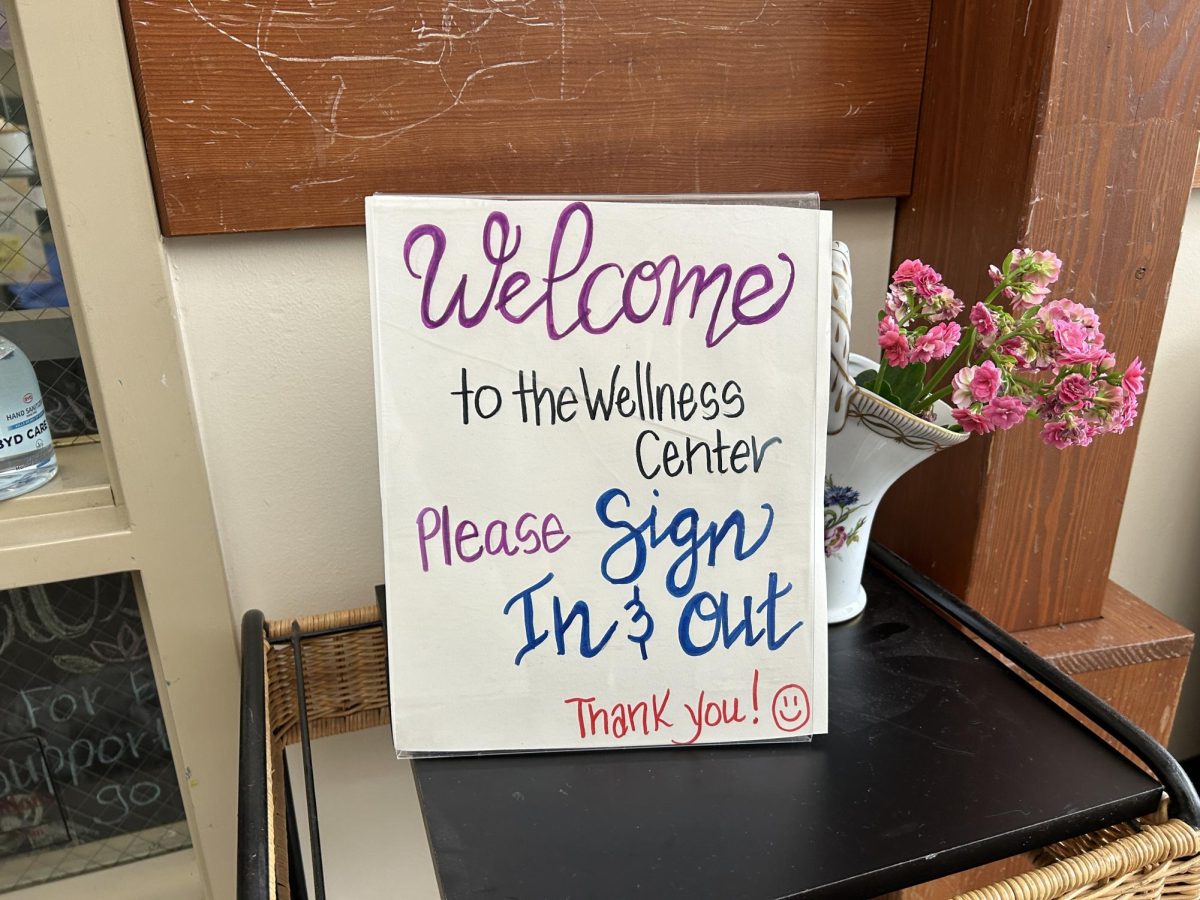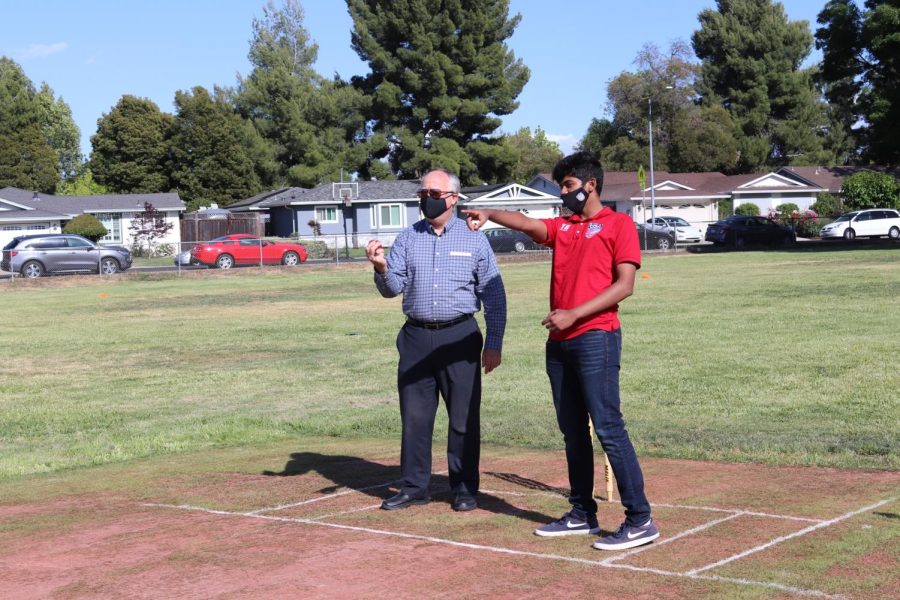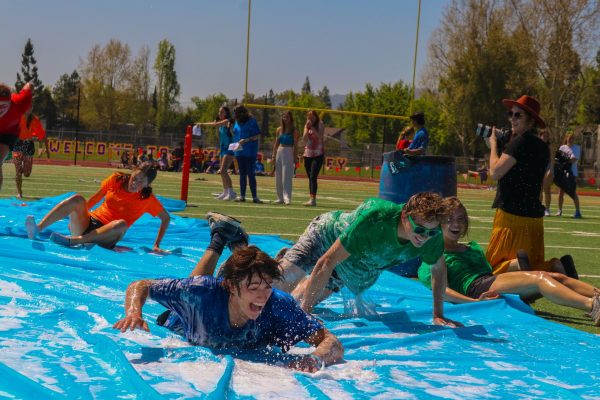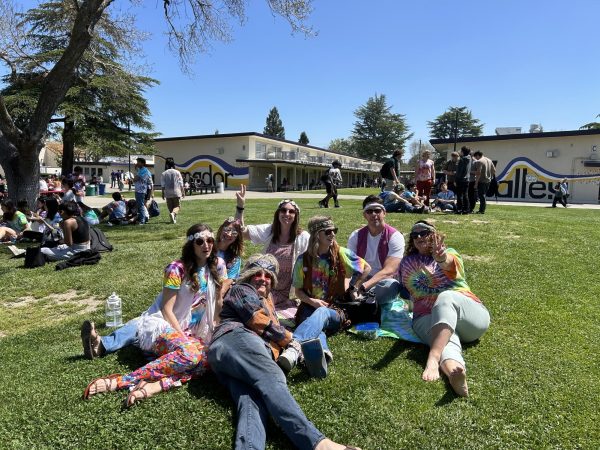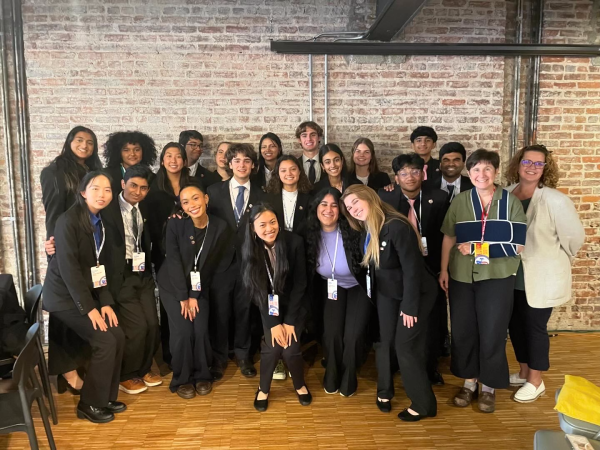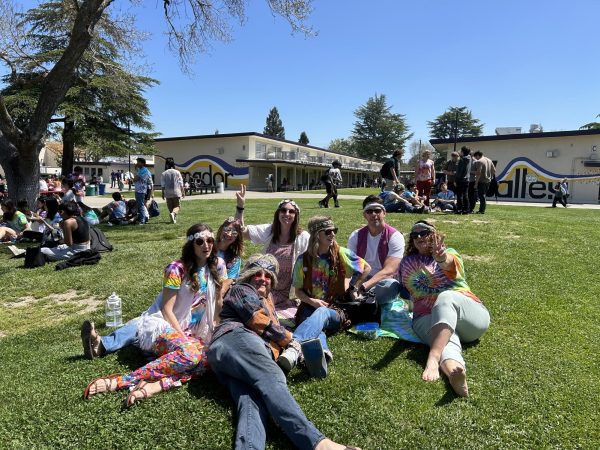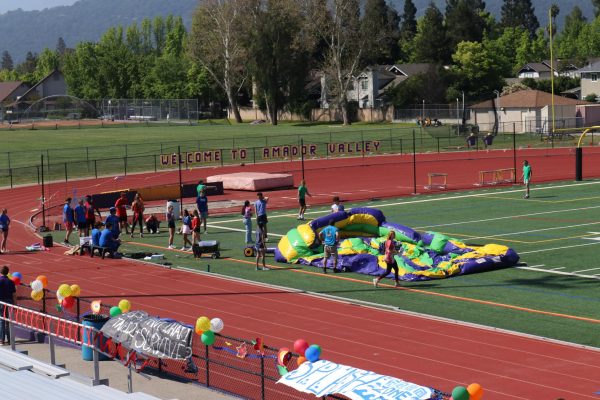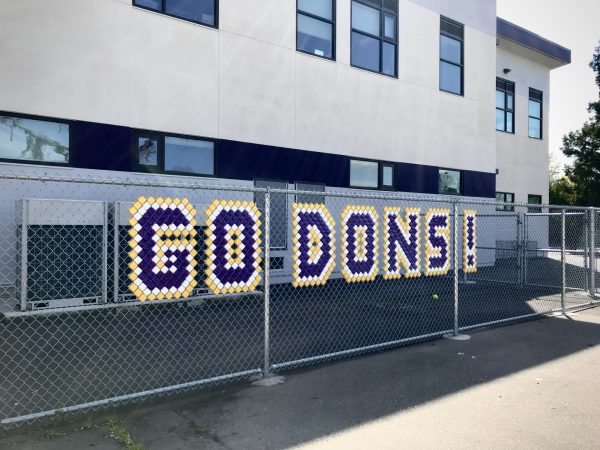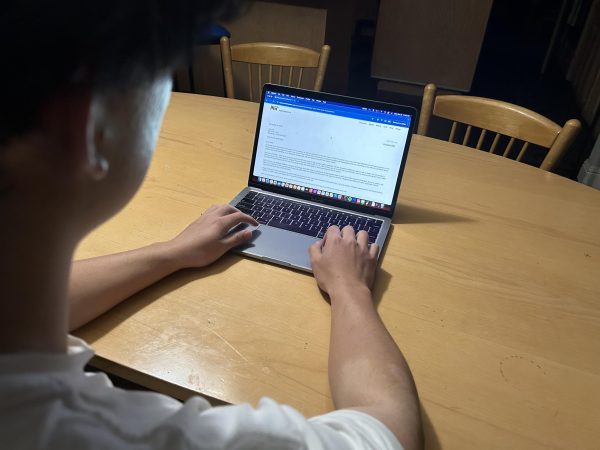How teachers are enforcing the new camera update for 2nd semester
January 26, 2021
On December 2nd, the Pleasanton Unified School District sent out a reminder of digital expectations for the second semester which include the expectation that students have their cameras on in all their classes.
The “digital expectations” notice has drastically increased the amount of students who have their cameras on in class; teachers have also noted an increase in classroom engagement.
“I thought [the camera enforcement policy] was very effective and it made a difference right away in this semester. The interactions are better so I think it helped. If the teachers wanted to, they could also follow through with the parents because I think the parents want them to interact too,” said Expository Reading & Writing and Sophomore English teacher Peter Robbins.
In order to enforce the policy, teachers typically include keeping cameras on as part of a student’s participation grade in order to encourage each student to stay visible and engaged during class.
“Some of my teachers have included cameras on as part of their attendance policies (so if students’ cameras are off they’re marked as absent). Cameras being on has impacted participation grades since the first semester in some of my classes,” said Kathryn Wiest (‘22).
Teachers have also expressed that there was a disconnect between teachers and parents regarding the expectations for remote learning. The digital enforcement policy has allowed for parents to also play a role in encouraging their kids to participate more.
“I think that when we reached out to the parent/guardian community some didn’t realize their students’ cameras were off and so I think that was also very helpful. I think having our administration, teachers, parents, and students all on the same page has made a huge difference,” said Physical Education teacher Mary Scavone.
While teachers believe that having more cameras on has boosted engagement and been reinforced by the digital expectations policy, the impact that keeping cameras on has on classroom engagement is questioned by certain students.
“I don’t think that students having their cameras on or off impacts engagement in remote learning. If students don’t want to pay attention, it wouldn’t be hard to not pay attention even if they have their cameras on. Additionally, for students who have anxiety having their cameras on might make it harder for them to work than if they were off,” said Wiest.
In response to technological issues that may prevent certain students from keeping their camera on even with the new enforcement policy, teachers have expressed that they are typically flexible and will try to support those students as best as possible.
“I know the policy is the cameras have to now be on but if kids have technology issues then teachers need to help steer those kids to the appropriate people to help them get those technology issues resolved. That could take a few weeks so I believe that most teachers are being pretty reasonable about how these rules are being applied,” said AP World History teacher Christopher Murphy.
On the other hand, some students believe that an increase or decrease in the number of students who keep their cameras on is directly correlated to how many students understand information in their classes.
“I think there are many downsides to keeping cameras off because students can’t build relationships with their teachers, aren’t as engaged in class, and in my experience don’t retain as much information,” said Suhani Singhal (‘21).
As a result of the new camera update, teachers have noticed an upward trend in the number of students showing their faces but remote learning still presents many issues that teachers are constantly trying to address through creative lesson plans.
“I know that every teacher is trying to constantly come up with new ways to keep kids engaged and it’s an ongoing challenge. Sometimes we find something that works and I’ll be honest, sometimes I try something and it doesn’t work as well,” said Murphy.

